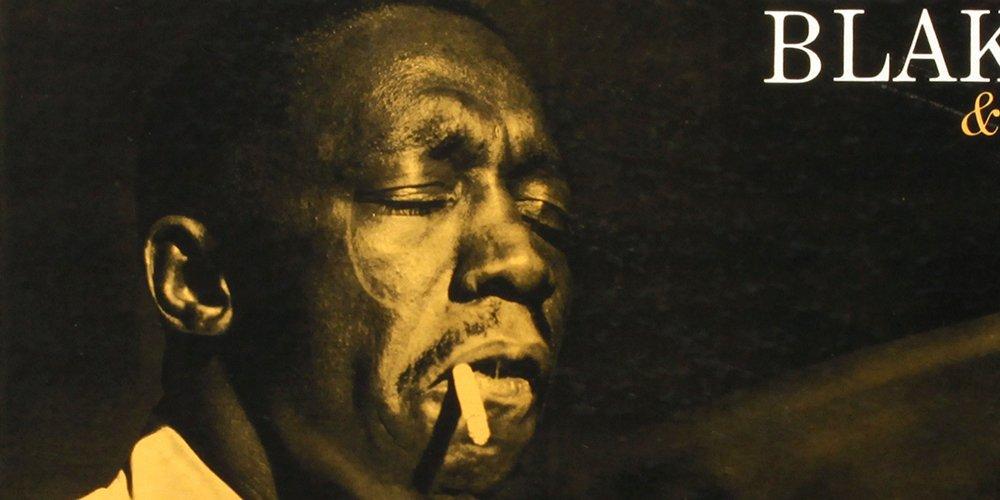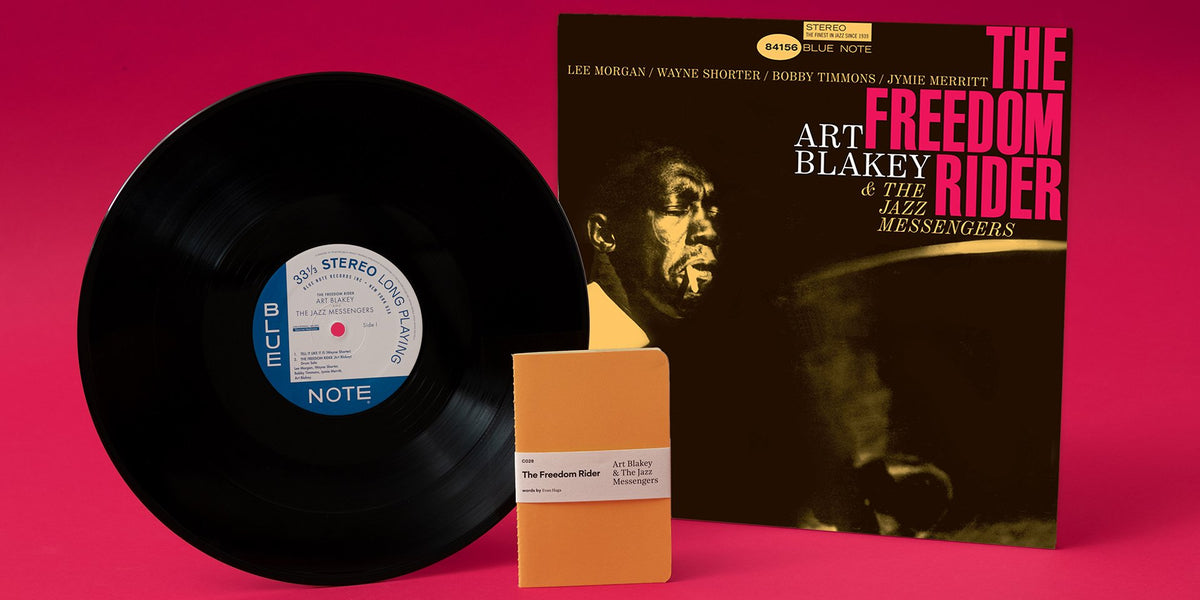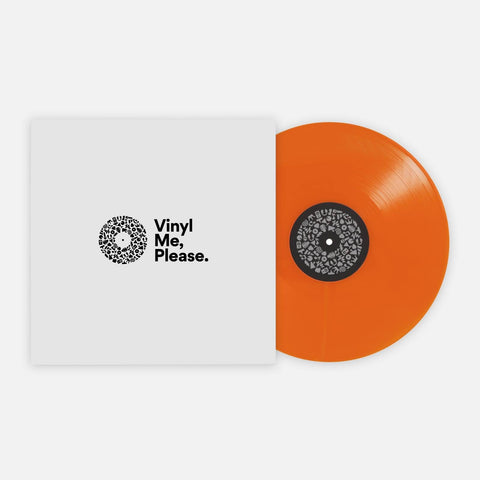The drummer Art Blakey was, without doubt, one of the most brilliant and influential rhythmic architects in jazz history. He was also, weirdly, both iconic and unsung. Other drummers, like Max Roach and Kenny Clarke, often obscure Blakey in discussions about the birth of modern jazz, but he was there too, tuning up the language of the swing era until it became a strange and ferocious music called bebop. Elvin Jones has been broadcast as the owner of the cerebral and acrobatic approach to jazz drumming referred to as polyrhythmic, but no less an authority than Roach argued that Blakey got to four-limbed independence first. When it came to the gospel- and R&B-fueled gait that defined hard bop, Blakey received his just due as the music’s avatar.
The reason Blakey might be overlooked as a pioneering technician is a good problem to have. His more celebrated legacy is as a mentor who traded in tough love, common sense and enough anecdotes to fill a thousand biopics. At odds with the prevailing jazz-as-art ethos that attached itself to bop, he valued his audiences and endeavored to entertain. His long-running working band, the Jazz Messengers, which he headed up with the pianist Horace Silver in the ’50s before helming it alone, nurtured a great number of the most important musicians to ever play jazz. And this is crucial: Blakey emboldened them to write original music for the band, and saw the process of them leaving his company to form their own bands as organic growth. Many of those disciples have become bandleaders and jazz schools in Blakey’s image.
He steered the Messengers for three-plus decades, and he certainly came across some lulls and obstacles during this marathon, facing down ardent competition from rock and pop, his own organizational shortcomings and other challenges in and out of his control. But the Jazz Messengers mostly hurdled through the years as a ruggedly dependable institution. They were bulletproof in sound and mission—a beacon of midcentury swing through the fusion era—yet also mercurial. Personnel shifted frequently, though the yardstick for talent remained sky-high. When Blakey died in 1990, at age 71, the New York Times didn’t hedge in their effort to illustrate the range of his influence. “A partial list of the musicians he hired resembles a history of jazz from the 1950s to the present,” the critic Peter Watrous wrote. “They included the trumpeters Kenny Dorham, Clifford Brown, Bill Hardman, Lee Morgan, Freddie Hubbard, Woody Shaw, Wynton Marsalis, Wallace Roney and Terence Blanchard; the saxophonists Lou Donaldson, Jackie McLean, Hank Mobley, Johnny Griffin, Wayne Shorter, Gary Bartz, Bobby Watson, Branford Marsalis, Donald Harrison, Kenny Garrett and Javon Jackson, and the pianists Horace Silver, Bobby Timmons, Cedar Walton, John Hicks, James Williams, Mulgrew Miller and Bennie Green.”
To mark Vinyl Me, Please’s new reissue of Blakey’s 1964 Blue Note LP The Freedom Rider, which you can sign up for here, we’re presenting this roundup of recommended Messengers recordings. Blakey participated in plenty of outstanding sessions in contexts outside the Messengers, but this article is a tribute to the longevity and recruiting know-how he demonstrated in his working band. It’s also testament to how most eras of his career produced well-documented results, many of them overlooked. Don’t consider this a best-of exercise. Blakey—or Bu, his nickname derived from his Muslim cognomen Buhaina—was too prolific and consistent for that to be anything but a fool’s errand.
A Night at Birdland Vol. 1 (Blue Note, rec. 1954)
Along with debating which Messengers lineup was the best, another dependable jazz argument attempts to declare when the Jazz Messengers’ story actually begins. A Night at Birdland Vol. 1, with its landmark live recordings captured at the hallowed Manhattan venue, is an excellent claim. Credited to the Art Blakey Quintet, it lacks the Messengers handle but features the tandem of Blakey and Silver, along with the saintly trumpeter Clifford Brown, the bassist Curly Russell and saxophonist Lou Donaldson, whose Charlie Parker-indebted playing might seem striking to those familiar only with his later boogaloo and soul-jazz sides. The audio, given the date and the nascent state of live recording, is superb, thanks to Blue Note Records’ go-to engineer, Rudy Van Gelder, who brought his Neumann microphones, an audiophile secret weapon, from his studio. In the music you can hear the sprouts of the toughened-up bop vocabulary that would become hard bop, with standout compositions by Silver, the genre’s most definitive writer. (Bonus fun: the spoken introduction by Pee Wee Marquette, a wily little person and future Letterman guest who emceed at Birdland and famously exhorted tips from musicians; those who didn’t pay up had their names comically butchered from the bandstand. This intro was sampled four decades later for Us3’s acid-jazz hit “Cantaloop [Flip Fantasia].”)
But an arguably more monumental collection from this early period, and the one that threw down the gauntlet on how soulful hard bop could sound, isn’t under Blakey’s bin divider. Blue Note’s Horace Silver and the Jazz Messengers, also featuring saxophonist Hank Mobley, trumpeter Kenny Dorham and bassist Doug Watkins, includes two of Silver’s best-loved and oft-covered cruises, “The Preacher” and “Doodlin’.” The Jazz Messengers, a Columbia LP from 1956, boasts the virtuoso trumpeter Donald Byrd and a good deal of Mobley’s keen writing.
Hard Bop (Columbia, 1957)
By the time Hard Bop was released in 1957, Horace Silver had left and Blakey’s brand name and concept of mentorship were intact, if less conspicuous than they’d become. Blakey was 37 during these performances, anchoring a band of musicians whose ages ranged from late teens to mid-to-late 20s: alto saxophonist Jackie McLean, trumpeter Bill Hardman, pianist Sam Dockery and bassist Spanky DeBrest. In Blakey fashion, the tunes were written by his younger musicians, aside from two standards. One of McLean’s contributions, “Little Melonae,” flaunts a theme hinting at the saxophonist’s knack for subverting hard-bop’s cuteness—or what later became codified as postbop.
As with many if not most Messengers lineups, this one is a fascinating high-school-reunion, what-became-of? study. McLean, whose Charlie Parker chops would take on the profound influence of Ornette Coleman, released some of the most interesting records of the Blue Note label’s thrilling ’60s and became a vaunted mainstream bandleader and figure in jazz education. McLean’s mid-’50s cohort Hardman gigged and recorded with Charles Mingus, Lou Donaldson, Junior Cook and others, and remained a supremely gifted hard-bop-centered soloist until his death in 1990; today, he’s one of those countless jazz names we don’t speak of enough.
Moanin’, a.k.a. Art Blakey and the Jazz Messengers (Blue Note, 1958)
Why has history deemed this the apogee of Messengers LPs, as well as one of the essential documents in the story of Blue Note Records and jazz in general? It starts with the material. The saxophonist Benny Golson, an erudite visionary whose best original music has worked daringly inside the jazz tradition, contributes four pieces, including two that would become ubiquitous: “Along Came Betty,” a harmonically inventive tune that feels nonetheless like a warm breeze; and “Blues March,” for which Golson took inspiration from the groove-savvy marching bands at historically black universities. But it’s pianist Bobby Timmons’ “Moanin’,” nimble but stout with a call-and-response hook, that sealed the deal and, perhaps most important, came to embody the concept of hard bop in general. The short definition of hard bop has been bebop infused with gospel and blues, but so much heyday “hard bop” better resembled slighter variations on the sprightly music of the first-generation boppers; “Moanin’” is powerful yet laidback and greasy—hard bop in the collective consciousness. In the hands of Blakey, Timmons, Golson, trumpeter Lee Morgan and bassist Jymie Merritt, the subgenre received its anthem, and soul jazz its forebear.
The Big Beat (Blue Note, 1960)
The saxophonist Benny Golson’s tour of duty as a Messenger was unfortunately brief. His absence did create a space for historic opportunities, however. He was followed first by Hank Mobley, and then by Wayne Shorter, who’d been discharged from the army not long ago and became a Messenger via his pal Lee Morgan’s recommendation. Between 1960 and ’61, Shorter, Morgan, Timmons and Merritt constituted a version of the Jazz Messengers that is a strong contender for number one. Morgan, who’d venture into searching modal music as the ’60s progressed, mostly maintained his blues-and-bop mastery with Blakey. Ditto Shorter, today’s most important living jazz composer, whose postbop-defining experiments were broached when he was Blakey’s go-to composer and music director, but mostly subsumed into the drummer’s enthusiastic swing. The Big Beat is a very fine place to start with this lineup and Shorter’s writing for it, and the LP contains three of his inviting yet deceptively involved lines: “The Chess Players,” “Sakeena’s Vision” and “Lester Left Town.” Timmons’ much-covered workhorse “Dat Dere” makes one of its earliest appearances.
Later in Shorter’s time as a Messenger, the band explored the sextet format and took on additional masters-in-progress: trombonist Curtis Fuller, trumpeter Freddie Hubbard, bassist Reggie Workman, pianist Cedar Walton and others. The must-hear Free for Fall, recorded for Blue Note in 1964, begins with a riveting title track on which Shorter achieves maximum Coltrane. Caravan, a Riverside session from 1962, also kicks off with tour de force fire, in this case a take on the Ellingtonian title cut in which the band jump-cuts between burning swing and Blakey’s patented Afro-Latin tinge.
Keystone 3 (Concord Jazz, 1982)
To general music fans, it might seem like Blakey only ever recorded for Blue Note. Aesthetically and historically he was a quintessential Blue Note artist, but he recorded for many other labels as well, and his ability to deliver rarely abated. His ’70s LPs on Prestige, for instance, are intriguing for the presence of trumpeter Woody Shaw, an insiders’ favorite, and electric piano. In his later decades he did terrific work for Concord Jazz, who released LPs including 1978’s In This Korner, touting ace players like the saxophonist Bobby Watson and the Russian trumpeter Valery Ponomarev. The latter’s successor was a teenaged New Orleanian named Wynton Marsalis, whose older brother, the saxophonist Branford Marsalis, later made it into the fold. Keystone 3, recorded, like In This Korner, at the San Francisco club Keystone Korner, features both brothers along with pianist Donald Brown, bassist Charles Fambrough and tenor saxophonist Bill Pierce. (Branford, a current tenor titan, appears here on alto.)
It isn’t a canonical record, but it is a remarkable one: The crisply youthful, state-of-the-art revision of mainstream acoustic jazz that became the Young Lions sound is on offer here, and Blakey, then in his 60’s, meets his musicians on their explosive terms. The Marsalis brothers would depart soon enough to form their own band, to be replaced by two other premier New Orleans-raised Young Lions, trumpeter Terence Blanchard and alto saxophonist Donald Harrison Jr. Following what seems in hindsight like a Messengers bylaw, they too would split to form their own combustible quintet and go on to have successful independent careers. Never wanting, Blakey on his next album featured trumpeter Wallace Roney and alto saxophonist Kenny Garrett—two more best-of-generation players.
Evan Haga worked as an editor and writer at JazzTimes from 2006 to 2018. During his tenure, the magazine won three ASCAP Deems Taylor Awards, one of which was for an article Haga wrote on the confluence of jazz and heavy metal. He is currently the Jazz Curator at TIDAL, and his writing has appeared at RollingStone.com, NPR Music, Billboard.com and other outlets.
Related Articles
Join the Club!
Join Now, Starting at $36Pages







